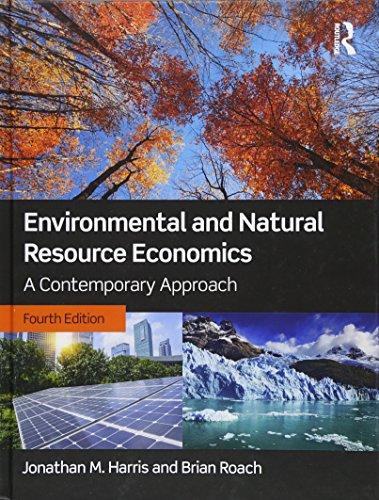XYZ Forest Products owns a 2,000-acre tract of forest land, of which 1,000 acres are currently planted
Question:
XYZ Forest Products owns a 2,000-acre tract of forest land, of which 1,000 acres are currently planted in hardwood trees (oak, beech, etc.) and 1,000 in softwoods (pine). An acre of either kind of forest contains a biomass (standing timber) of 200 tons per acre. But hardwoods are slower-growing: an acre of hardwoods will add 10 tons per acre per year of new growth, whereas an acre of softwoods will add 20 tons per acre per year.
The going price is $500 per ton for hardwood and $300 per ton for softwood. These prices are expected to remain stable for the indefinite future (in real terms). Two management practices are possible: clear-cutting, in which all trees are removed; and sustainable timbering,
in which the amount of biomass removed annually is just equal to annual growth. The cost of clear-cutting is $40 per ton (for either kind of tree), while that for sustainable timbering is $70 per ton.
Analyze the profit-maximizing forest management policy that XYZ corporation will pursue if:
(a) Real interest rates are 3 percent per year.
(b) Real interest rates are 5 percent per year.
Now assume that XYZ is taken over by the Gargantua conglomerate, which has $100 million in debt at a 10 percent real interest rate. Analyze its probable forest management practice.
Comment on the role of the interest rate here, and suggest a government policy on forest management. Are there other considerations not apparent in the data given here that would affect policy decisions? What would you recommend if the forest were publicly rather than privately owned? How might your recommendations differ for forest management in developed versus developing countries?
Step by Step Answer:

Environmental And Natural Resource Economics A Contemporary Approach
ISBN: 9781138659476
4th Edition
Authors: Jonathan M. Harris, Brian Roach






